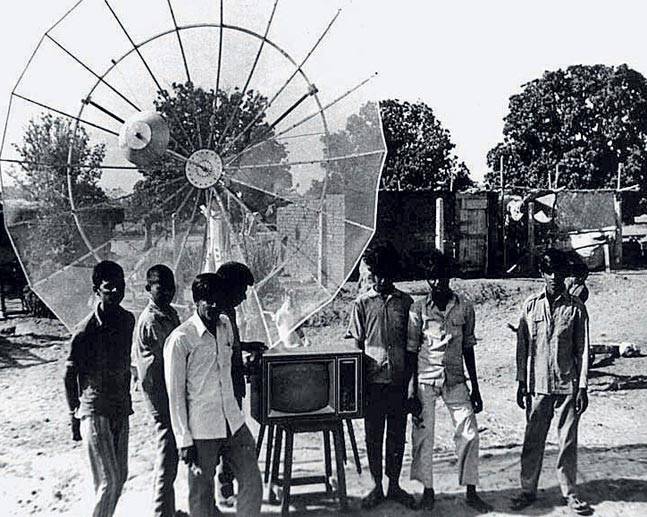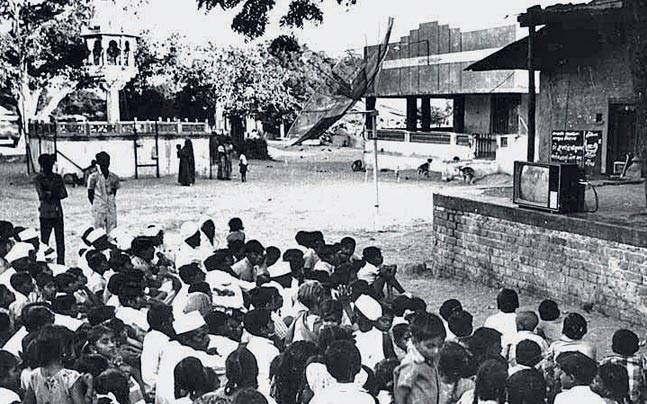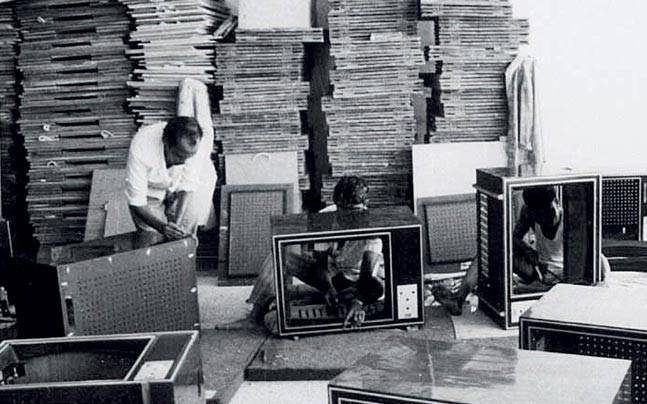A Forgotten Village and Its Role In Nurturing India’s Television Revolution
Gujarat’s Kheda district has a special place in Indian history for many reasons. However, few know that it was also instrumental in decentralizing television broadcasting in India

Gujarat’s Kheda district has a special place in Indian history for many reasons. It was the home of Sardar Vallabhbhai Patel, the place where Mahatma Gandhi started his second Satyagraha on Indian soil and the launchpad of the historic white revolution that led to brand Amul.
What few people know is that Kheda was the location for a project that was instrumental in decentralizing television broadcasting in India. Here’s the little-known story of Kheda Communications Project.

Television was introduced in India for the first time on September 15, 1959, in Delhi, a little over two decades after the first television service of the world was started by British Broadcasting Corporation (BBC) in 1936. With help from UNESCO, programmes about topics such as citizens’ rights, civic duty, traffic sense and community health were broadcast twice a week for an hour a day.
Two years later, these broadcasts were expanded to include educational programmes for school children. In 1972, India’s second television station was opened in Bombay, followed by stations in Amritsar and Srinagar (in 1973) and Madras, Calcutta and Lucknow (in 1975). Nevertheless, television still remained a distant dream for the greater part of rural India.
However, during this time, one of India’s greatest visionaries had already started taking steps to change this situation.

A man passionate about harnessing science to build a modern India, Vikram Sarabhai had been appointed the Chairman of Atomic Energy Commission in May 1966 (after the sudden death of Homi Bhabha in an air crash). He wanted to harness the power of space science to find solutions to the hurdles India was facing in the fields of communication, meteorology, and education.
In the same year he joined as Chairman of AEC, Sarabhai started a dialogue with NASA that formed the base for Satellite Instructional Television Experiment (SITE). Launched in 1975, SITE marked the first major India-US partnership in space. It was also this nation’s first attempt to use technology for education.
The core idea behind this experimental project was to use NASA,s first direct broadcasting satellite ( with a powerful, nine-metre antenna that opened in space like an umbrella) to beam television programmes to remote Indian villages. While the satellite would be foreign, the hardware (like the direct-reception equipment, the TV sets and the earth stations for uplinking programmes to the satellite) would be designed and made in India.
It was with this concept in mind that the Kheda Communications Project was set up under SITE as a pilot project that would be replicated in rural India. The village selected for India’s first local rural television telecast was the obscure hamlet of Pij in Kheda district of Gujarat.
A low-powered transmitter gifted by United Nations Development Programme (UNDP) and a local production studio was set up at Pij while a satellite earth station was set up at Ahmedabad’s Space Applications Center (SAC). Next, 651 televisions sets were distributed among the residents of 400 villages in a 35 km radius.
The much-awaited moment finally arrived on a sultry evening in July 1975. Over 100 excited villagers huddled together at a ground in Pij, their eyes glued to the wooden box with a blank glass screen in front of them.
There was a crackle of static, and then the screen blinked to life with an audio-visual of people discussing issues in the local language. Nothing less than magic for the awestruck villagers, the moment would remain etched in their memories forever.

The Kheda Communications Project did not end with this historical transmission. It continued to experiment with the process, style and content of the audiovisual communication to create a model that would be effective in taking development programmes to rural India.
The ISRO campus in Ahmedabad hosted a motivated band of people, young and old, which included scientists, engineers, folk culture experts and film makers. Such an eclectic environment had never been seen before in space organisations anywhere in the world!
Producers (both independent as well as those under SAC patronage) drove into the villages of Kheda to shoot programmes that would use local artists, realistically portray local issues of social importance and suggest local solutions. This connect with the audience was what made this project so unique as well as highly effective.
For example, weekly features such as Daad Fariyad chose a specific problem and discussed it in detail with both affected villagers as well as government officials before providing an implementable solution. Another sensitive serial, Hawe Na Saheva Paap created awareness about the exploitation of Harijans by upper caste farmers.
Kheda Communications Project also gave much importance to understanding and measuring the impact of the television programmes that were broadcast. As the villagers became familiar with television, the initial amazement gave away to easy acceptance. Studies conducted by SAC’s research cells showed that villages covered by the project had a greater level of awareness as compared to those who weren’t.
For instance, after a broadcast on immunisation, it was found that 96% of the villagers who watched it knew of the benefits of immunisation as opposed to 24% otherwise.
Kheda Communications Project was intended as a year-long experiment but such was its success that even after project term ended in 1976, it was extended indefinitely.

Replicating the concept, TV sets for community viewing were set up in some of the most backward and remote villages of six states (Bihar, Orissa, Madhya Pradesh, Rajasthan, Andhra Pradesh and Karnataka), with programmes covering crucial subjects such as health, agriculture and education.
In 1984, Kheda Communications Project won the UNESCO Prize for rural communication efficiency. However, in 1985 (when Doordarshan set up its full-fledged facility at Ahmedabad) it was decided that the Pij transmitter would be moved to Chennai for a second channel. This decision was greeted by vociferous protests by the locals who were deeply attached to the historic transmitter and even started a ‘Pij TV Kendra Bachao’ movement.
Despite these protests, the 1-kilowatt transmitter tower was finally shifted to Chennai in 1990. Today, the land on which it was set up is used for growing vegetables while the transmitter itself has become a fond memory for the elderly villagers of Pij.
However, the lasting impact of Kheda Communications Project (and SITE as a whole) can never be forgotten. Not only did project touch and positively change the lives of millions of rural Indians, but it also set a strong message about independent India’s advancing technological prowess. As Arthur Clarke, renowned science fiction author, said on the 40th anniversary of SITE in 2015, ” It was the greatest communication experiment in history.”
Also Read: Transported on a Bicycle, Launched from a Church: The Amazing Story of India’s First Rocket Launch
Like this story? Or have something to share? Write to us: [email protected], or connect with us on Facebook and Twitter.
NEW: Click here to get positive news on WhatsApp!
This story made me
- 97
- 121
- 89
- 167
Tell Us More
We bring stories straight from the heart of India, to inspire millions and create a wave of impact. Our positive movement is growing bigger everyday, and we would love for you to join it.
Please contribute whatever you can, every little penny helps our team in bringing you more stories that support dreams and spread hope.



















